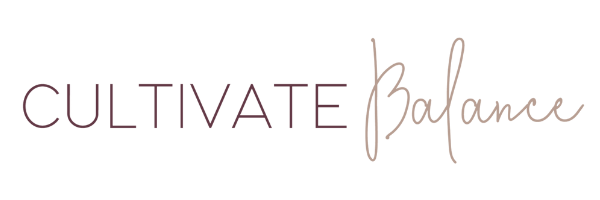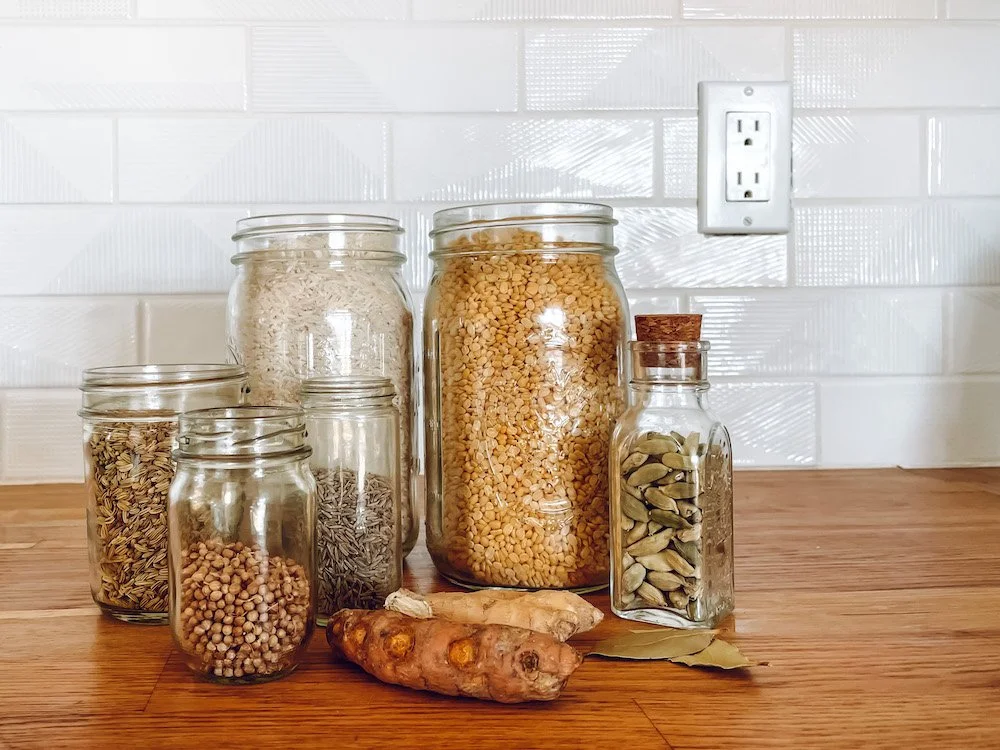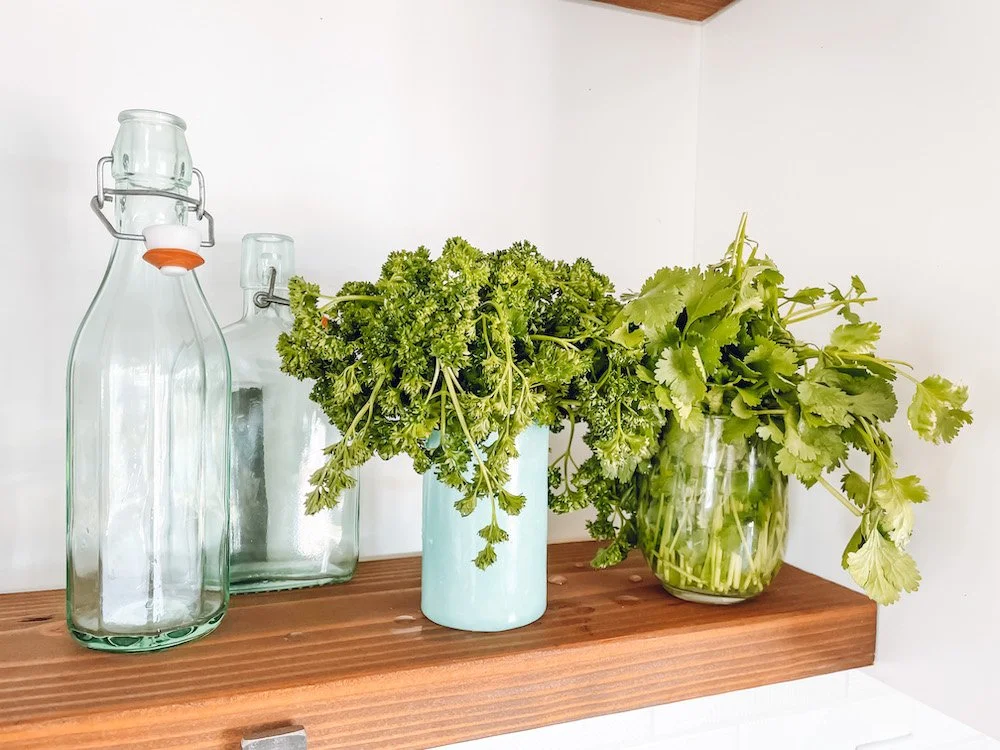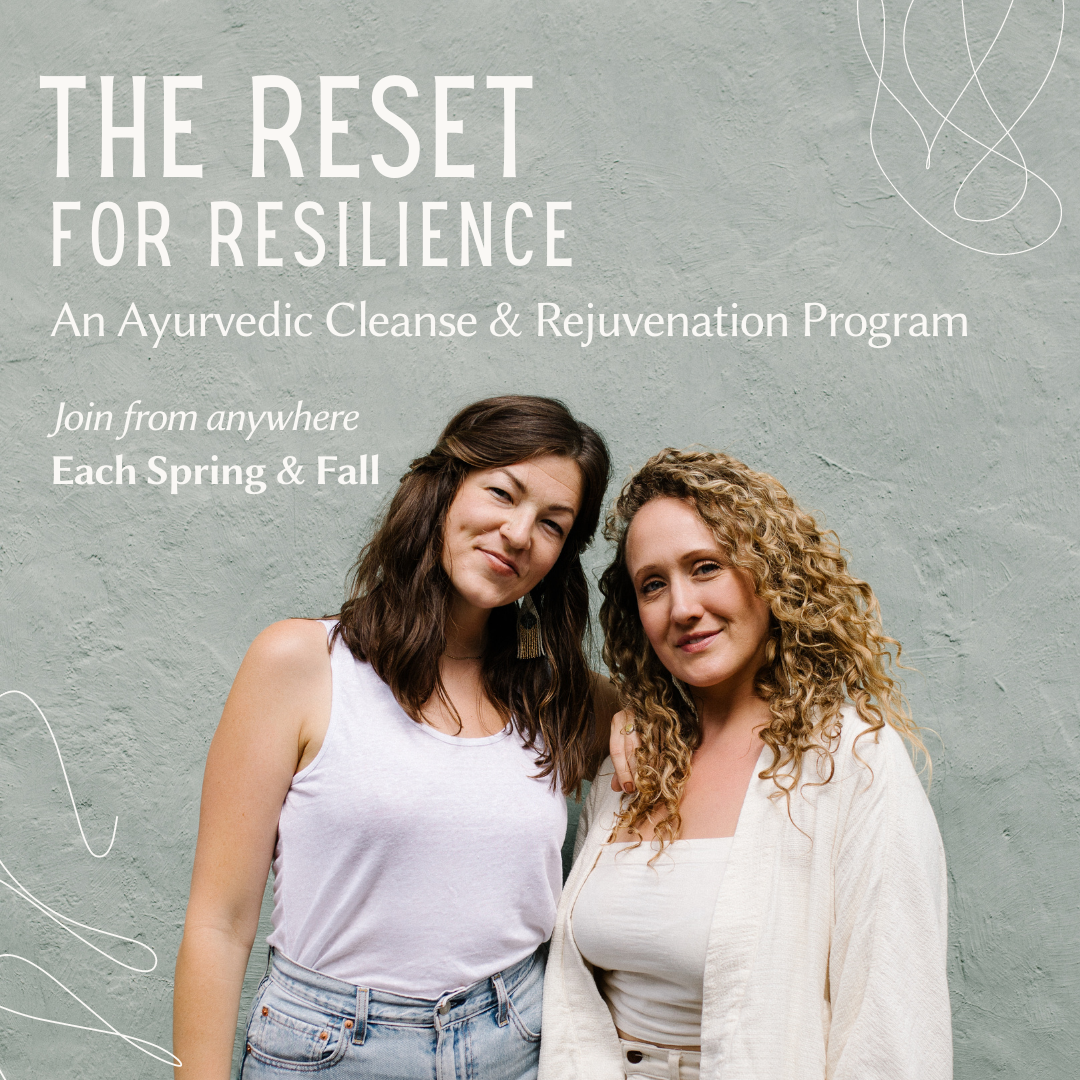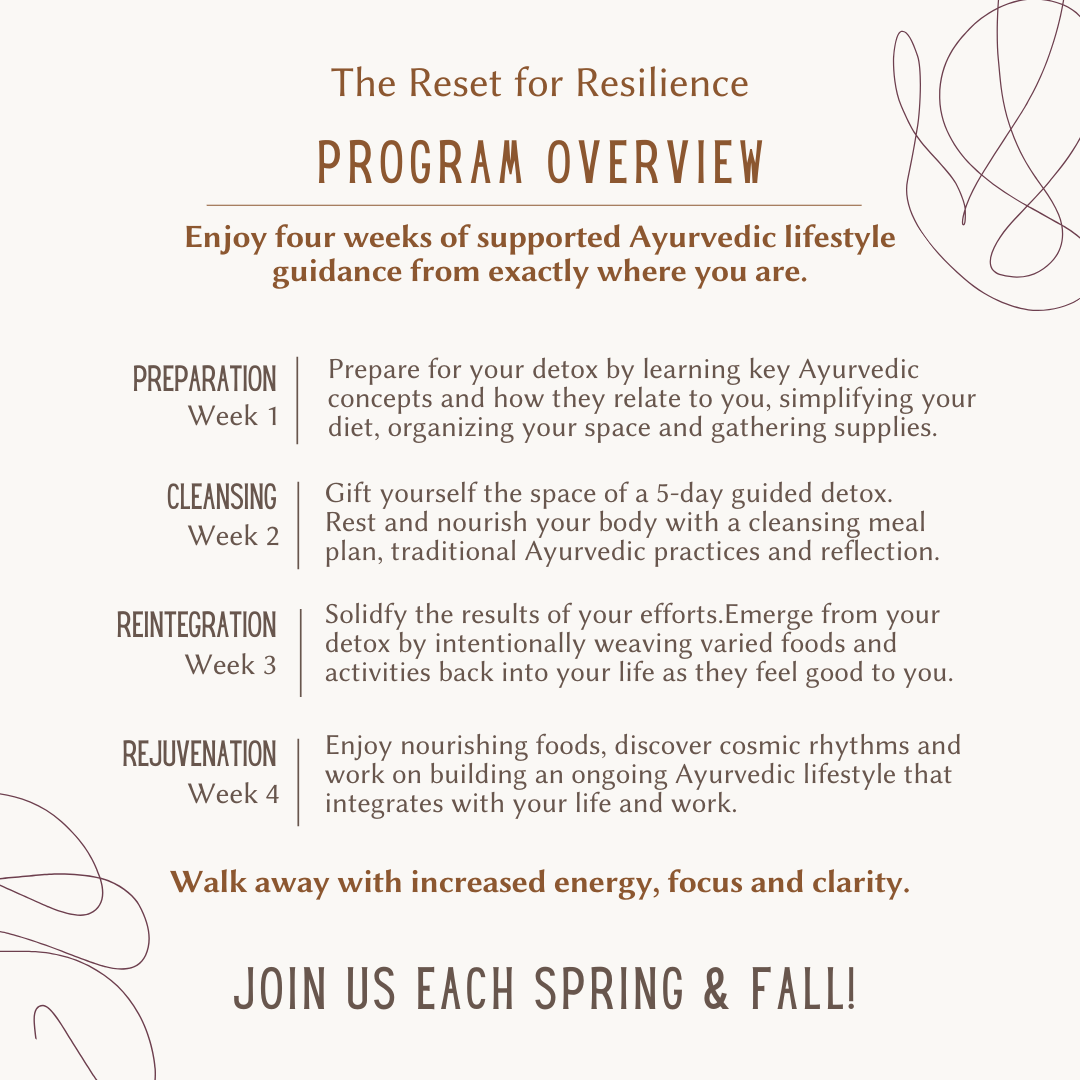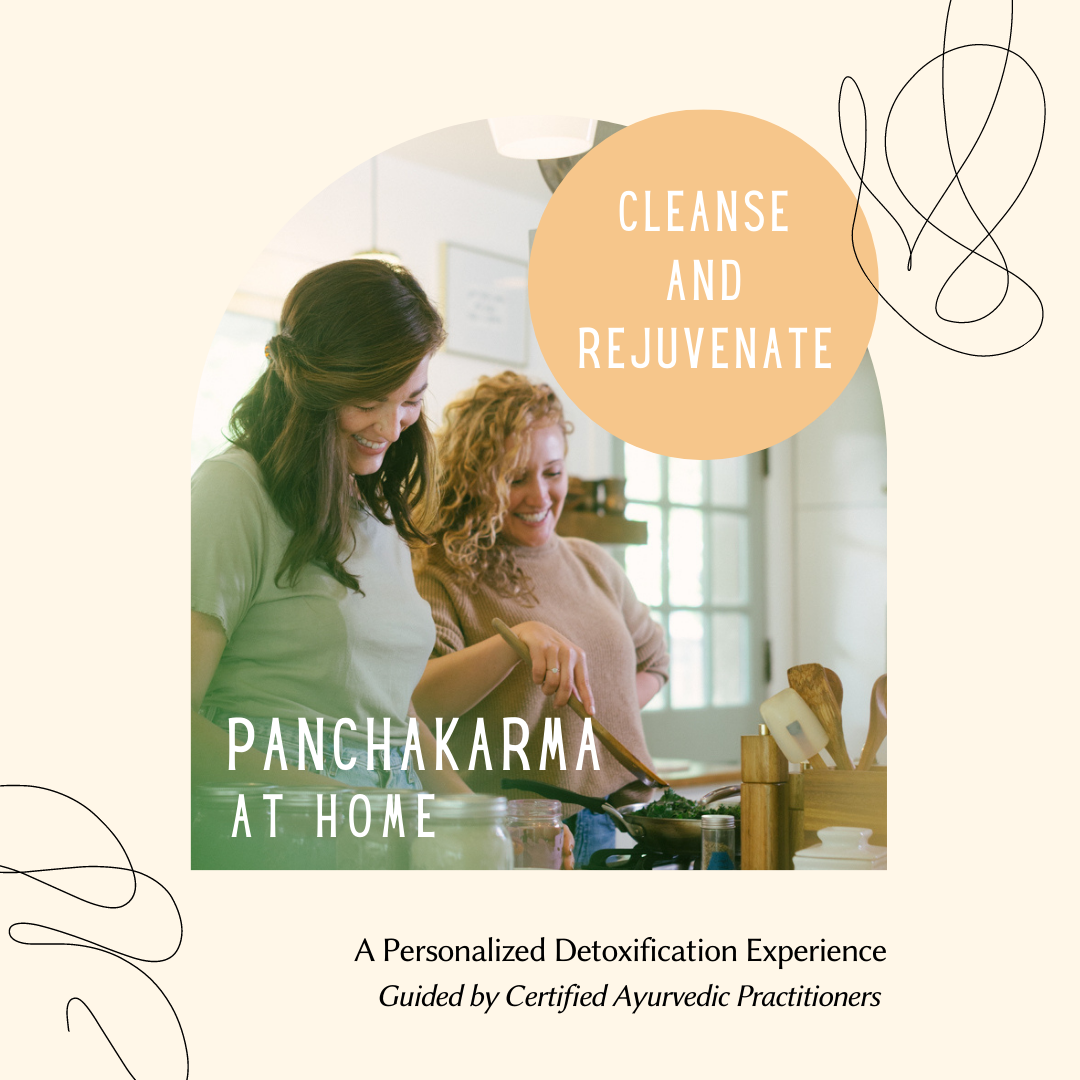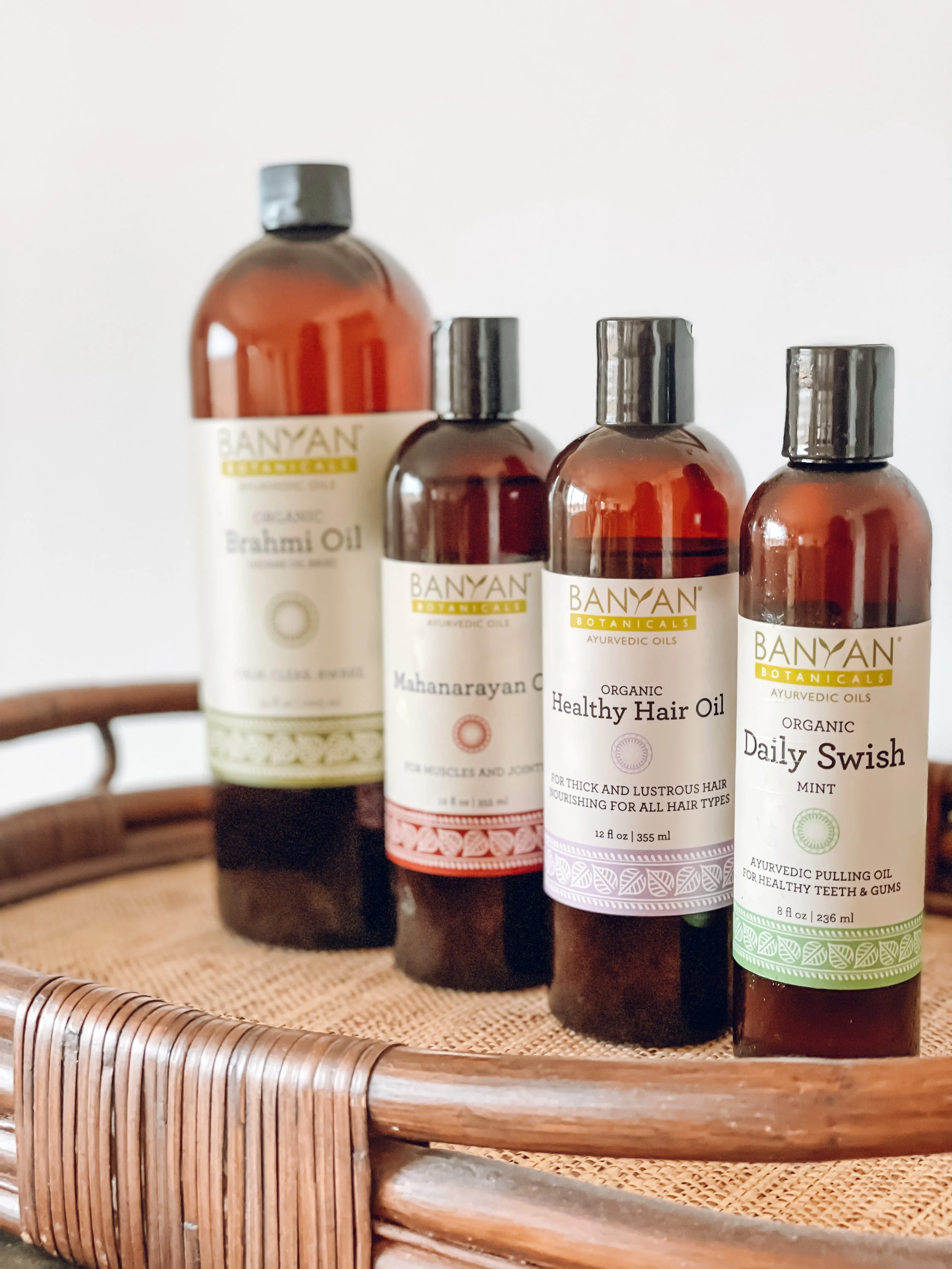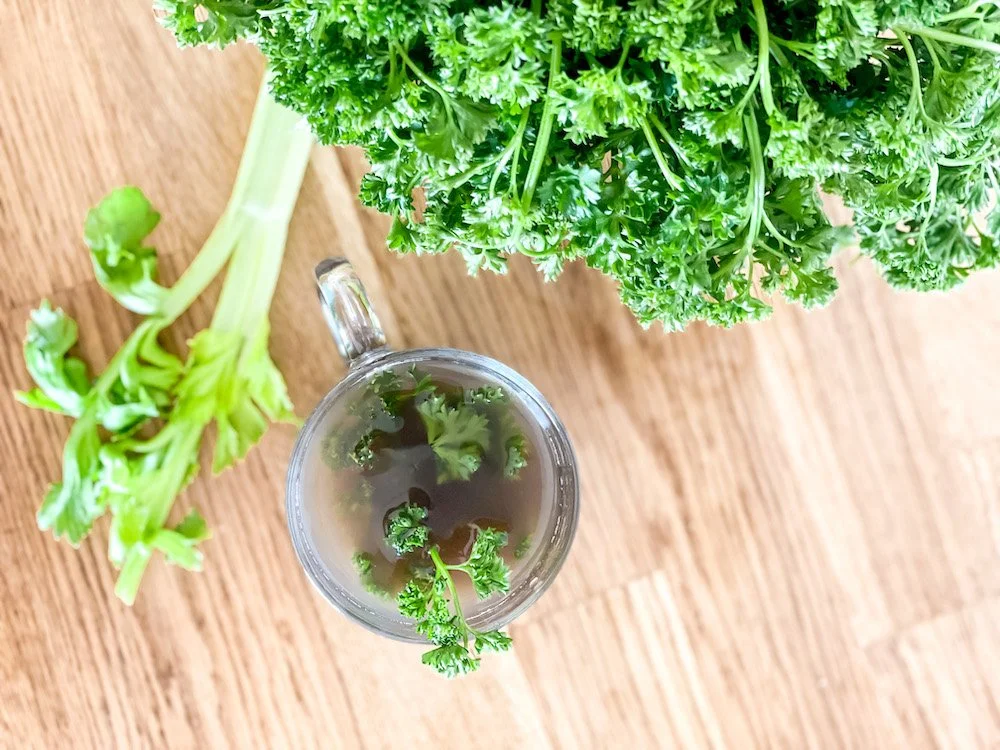Of all the things that people want to know about Ayurveda, we get the most questions about cleansing. We’ve found that our clients, friends and new folks who find us are really curious about the detoxification potential of this ancient healing system.
And, honestly — we understand what all the hype is about.
To put it very simply, toxins are a major challenge to our health…. and Ayurvedic cleansing works.
If you’ve found yourself here, you might be asking yourself…
What is an Ayurvedic cleanse? How do I cleanse the Ayurvedic way?
What does an Ayurvedic detox entail?
Or what can I eat while on an Ayurvedic cleanse?
Perfect. We’re so glad you’ve arrived!
We’re Molly and Sierra, Certified Ayurvedic Practitioners, and we are here to set the record straight and share with you some key information about how to do an Ayurvedic cleanse. We will answer all these questions (and more) so that you feel equipped to go forward and make an appropriate decision about when, why and how to detoxify your body using the wisdom of Ayurveda.
What is Ayurvedic Cleansing?
Cleansing the Ayurvedic way is a balanced and customized approach to detoxification that emphasizes nourishment over depletion and deprivation. Based on the wisdom of India’s ancient holistic healing science, an Ayurvedic cleanse focuses on eliminating toxins (called ama) and excess doshas, from the body. This is generally done through a simplified diet and a series of cleansing therapies. By taking yourself through this process, you will not only replenish your body and mind, but also restore your body’s natural wisdom. This is a distinct experience from many modern cleansing options, which can cause imbalance or depletion in the body.
What are toxins and how do they form?
The focus of an Ayurvedic cleanse is to eliminate ama, which is the internal metabolic waste that forms when digestive fire (agni) is weak. When agni is inhibited, food is only partially digested and cannot be transformed into optimal nutrition and energy. Instead, undigested food begins to ferment, becoming a rancid internal metabolic waste that is toxic to the body. It is not accepted by the tissues and begins to clog the vital channels in the body that are responsible for everything from elimination of wastes to transportation of nutrients and cellular communication. This heavy, sticky substance is a common factor in the cause of disease, and it is the secret culprit to so much of the heaviness we feel.
CURIOUS about your own reset?
We have an Info Session just for you.
Are you interested in an Ayurvedic Reset, but unsure how to integrate a four week program with your current life?
Are you excited about all the things we've mentioned, but not sure how it all works and if it's possible for YOU?
Are you ready to FEEL better, but are unsure how an Ayurvedic cleanse and rejuvenation program can help?
JOIN MOLLY & SIERRA for a quick info sesh and Q&A.
How do I know if I have a buildup of toxins (ama) in my body?
Our bodies are constantly giving us information via cravings and sensations, so if you find yourself longing for a cleanse, it’s probably time. You can also look for the tell-tale signs by first practicing tuning in more deeply with your body. If you are struggling with any combination of the symptoms below, it is likely that your system is coping with āma.
A thick white coating on your tongue
Fatigue, or a sense of stagnant, dull energy
Feeling of heaviness in the body and mind
Brain fog or an inability to think clearly
Foul smelling gas or burps
Frequent bad breath or a bad taste in mouth
Indigestion and often a low appetite or nausea
Constipation or diarrhea
Low libido and/or sexual debility
Body aches or stiffness
Skin issues such as rashes, acne or dryness
Cravings for sugar or processed carbohydrates
Overall feeling of uncleanliness
Something just feels off
Ayurvedic cleansing is intended to prevent and reduce the toxic build up in the system that is the cause of these symptoms — so that you feel light, bright, clear and energized. If you are ready to feel like yourself again, crave nourishing foods, start listening to what your body actually needs and reclaim your quality of life by restoring resilience, now is the moment to begin your cleansing journey.
How does Ayurvedic cleansing work to eliminate toxins?
An Ayurvedic cleanse works by gently stirring up the internal landscape in order to dislodge toxins and excess doshas, move them into the digestive tract, and eliminate them through a series of lightening (known as lekhana) therapies. This process generally involves a very simple diet that focuses on kitchari, juice, broth and herbal tea, as well as the application of oils to lubricate the channels of elimination. It requires careful tending to agni, which is the internal fire that is responsible for transformation and assimilation within. When agni is burning steadily, digestion is comfortable, your cells are nourished, and damaging metabolic toxins (ama) are eliminated with ease. From the Ayurvedic perspective, rest is key throughout the cleansing process, as it is important to provide the body and mind with a gentle space in which it can do this work.
When is the best time to detoxify, according to the wisdom of Ayurveda?
The Ayurvedic lifestyle includes what’s known as ritucharya, or appropriate seasonal routines and therapies based on the elemental influences of the doshas. Given that Ayurveda invites us to take cues from the rhythms of nature, cleansing in alignment with seasonal transitions of Spring and Fall is recommended. Cleansing during the seasonal transitions allows us to purge the excess doshas that have accumulated over the previous months. In the Fall, it’s about purifying the body of excess pitta (fire element), and kindling the digestive fire that may have gone dormant as the body worked to expel heat throughout the Summer. In the Spring, it’s about reinvigorating the digestive fire as a counter-balance to kapha (earth element) and the cool, heavy, damp qualities of the season. With this in mind, work cleansing into your seasonal routine around the two equinoxes each year if possible. This is something you can do from home, on your own schedule, but plan to prioritize your health for about one month.
What are the phases of an Ayurvedic Cleanse?
There are three phases to an Ayurvedic cleanse, and they are all vital to its success. It is important to note that cleansing without an adequate preparation period and a reintegration may be less effective, or even harmful. For that reason, the BEST way to move through these phases is with the support of a Certified Ayurvedic Practitioner — and we’ve got options for that below!
The first phase of an Ayurvedic cleanse is preparation. In The Reset for Resilience, the preparation phase is nine days, while preparation for the deeper and more comprehensive Panchakarma, may last up to four weeks. This preparation phase involves simplifying the diet by removing processed and difficult to digest foods from your diet, organizing space in your life and gathering the supplies you’ll need. In the case of Panchakarma, you will likely be given a blend of raktashodhana (blood cleansing) herbs to begin dislodging toxins and pathogens in your system. This preparation phase is vital so as not to shock the system when you begin the detoxification of the cleanse.
The second phase of an Ayurvedic detox program is the cleanse itself, which lasts five days in the case of The Reset for Resilience and closer to six or seven days in the case of Panchakarma. This is the portion of the program in which you will follow a specific, simplified meal plan and you will integrate the traditional detoxification therapies and/or body care rituals, in addition to finding deep rest. During this phase, you will be invited to take it easy in life and work if you are a participant in The Reset, or to take a full break from activities, engagements and media if you are a participant in Panchakarma. Allowing the gentle space for your body to do its work is vital.
The third phase of an Ayurvedic cleanse is the reintegration phase, the importance of which cannot be overstated. During the 1-2 weeks following the focused detoxification, you will re-emerge by gradually introducing a wider variety of foods, beginning with very simple and easy to digest items, and gently weaving back in the aspects of your life that feel good to you. Once your agni is robust again, you will transition to the rejuvenation portion of reintegration, which is believed to be the most important part of the entire process. This aspect, known as rasayana, is where we cultivate deep, lasting resilience and immunity (aka ojas). Some may distinguish rasayana (rejuvenation) as its own fourth phase, but it is traditionally included in within the post-purification measures (paschat karma) of phase three.
Want more support?
Work with us 1:1
We’re Sierra Brashear and Molly McConnell — two NAMA Certified Ayurvedic Practitioners and the founders of Cultivate Balance. We are both graduates of the Alandi Ayurveda Gurukula 2000+ hour Ayurvedic Practitioner program, where we studied under world renowned Ayurvedic Doctor, Alakananda Ma.
Our mission is to build individual and collective resilience through Ayurvedic Lifestyle Design as an emergent strategy for growing our capacity to embody the just and sustainable world we know is possible.
We work with clients to design the Ayurvedic Lifestyle that works for them — with uniquely curated rituals, remedies and routines to align with the cosmic cycles of nature and come home to your body.
What is the difference between Panchakarma and a Kitchari Cleanse?
Panchakarma is the classic Ayurvedic deep cleanse (which falls under a category of ancient cleansing techniques called shodhana). It is a process that requires about six weeks (from preparation through rejuvenation) and involves a series of five classical therapies utilized alongside a mono-diet, oil treatment and deep rest. Panchakarma is highly customized to the individual constitution, and you can work with a Certified Ayurvedic Practitioner at Cultivate Balance to support you through the experience.
Watch our 30 minute chat to learn more.
A kitchari cleanse (which falls under the category of preventative therapies known as shamana) is a gentler approach that tends to be more manageable in the modern world because it is a lower-key commitment. This approach involves simplifying the diet to focus on kitchari, enjoying cleansing beverages and indulging in optional body care rituals. It is ideal for those who have lower mental/emotional capacity and energy, or the inability to take much time off work. The Reset for Resilience is a kitchari cleanse offered in Spring and Fall by the Certified Ayurvedic Practitioners at Cultivate Balance. Both Panchakarma at Home and The Reset for Resilience have the potential to improve your longevity and quality of life, and you can learn more about both here!
Below is more info about the cleansing options we offer, followed by more Ayurvedic cleansing guidance!
The Reset for Resilience
An Ayurvedic Cleanse for Body and Mind
Community-based Opportunity
The Reset for Resilience is a 28-day program, centered around a five-day detox, that is designed to improve digestion, enhance immunity and promote clarity.
This Ayurvedic cleanse for body and mind is the ideal way to support your body to do its best, while inviting you to create meaningful space for inspiration, reflection and restoration. Join the guided group cleanse from the comfort of your own home during the Fall and Spring seasonal transitions — and be led by Sierra and Molly, the Certified Ayurvedic Practitioners of Cultivate Balance.
Panchakarma At Home
In-Depth Personalized Detoxification Experience
1-1 guidance by Certified Ayurvedic Practitioners
When you work with us for your at-home panchakarma experience, your protocol will be personalized to your particular Ayurvedic constitution and needs.
You will be guided through the series of five primary therapies, toxins and excess doshas are dislodged and eliminated from the body. The process is rooted in deep wisdom, and the experience for the mind and body is profound.
Your personal panchakarma practitioner, either Sierra or Molly, will support you to implement this traditional and highly effective detoxification program — in a way that works for your life.
How much does an Ayurvedic Cleanse cost?
Traditional Panchakarma at a wellness center can cost in the realm of $500 per day, plus travel costs, for what can easily total over $3,500. This is why it is part of our mission to make Ayurvedic cleansing affordable and accessible — our personalized Panchakarma at Home program is starts at just $1,200 and The Reset for Resilience community-supported experience is offered starting at $349 for four weeks of support. Both are completed from the comfort of your home, eliminating travel expenses. In both cases, you will need to invest in additional supplies, but costs on this can be kept quite low. We offer the shopping list and food recommendations, but you always have choice.
To stick with the simplest and most cost-effective ingredients consider the following:
Buying herbs and spices in bulk
Shopping for fruits and vegetables that are in season, or leaning more into apples and carrots than exotic, high-cost produce.
Buying a simple pre-made juice (like orange or grapefruit) and enjoying more boxed broth as a part of your supplementary foods
Buying only what you need, avoiding excess, and skip the optional items.
If you are interested, but the cost of enrolling in either of our programs is prohibitive to you, please contact us and we will work something out.
How do I prepare for an Ayurvedic Cleanse?
The three most important ways to prepare for a cleanse are to create time in your schedule, clean up your diet, and gather supplies, in addition to a few miscellaneous preparation items for Panchakarma. You’ll want to plan to be cleansing for about five days, and it’s important that you are able to take it easier during those days — so block off your calendar early. In terms of cleaning up your diet, you’ll want to simplify by eating mostly whole foods, and slowly eliminating challenging items including gluten, dairy, alcohol, caffeine and sugar. The cleaner your diet is before you begin the cleanse, the more comfortable and effective the process will be, which is why we provide you will a sample menu for preparation when you cleanse with us. When cleansing from home, you’ll need supplies such as a tongue scraper, triphala, body oils, and ingredients for cooking the simple, nourishing meals that will be part of your cleansing experience (get more of a sense of what you’ll need here). If you’re doing Panchakarma, you’ll meet one on one with your practitioner, begin taking blood cleansing herbs and doing internal oleation.
How is the The Reset for Resilience presented?
The Reset is set up in a course platform with videos introducing each of the sections and guiding you through different self care practices. Within the platform, you will have access to an ebook explaining the whole program (how and why it works), along with guides for shopping, recipes, self care practices etc. and daily routine checklists! We will also have four live calls — one at the beginning of each week to connect, tell you about what’s to come, and get your questions answered.
During the five days of cleansing in the middle of the program you will be invited to follow a cleansing meal plan that consists of nourishing and easy to digest foods (kitchari, mung soup, broth, juice, herbal tea, etc). We provide shopping lists and everything that you need to know to get organized and feel prepared.
This program is a great starting point for getting your physical health back on track, and it also offers opportunity for reflection, which supports mental and spiritual health as well. We are really committed to meeting people where they are to make this accessible, and are happy to chat about more ways to do that.
What is a realistic expectation of time needed for The Reset?
During the preparation week (leading up to the cleanse), you can expect to spend about 30 minutes each day on preparation and simple self care practices. Once the 5-day cleanse begins, we recommend holding space for about an hour of self care practices and reflection throughout the day (ex: 30 minutes in the morning, 30 minutes in the evening). If you have the ability to take more time for rest and reflection, we certainly encourage that! And also, we understand that people are doing their best to show up for so many aspects of their lives (family, work, community, etc.), which also takes time and commitment.
Beyond the recommended time for self care practices, there will be a small amount of daily food prep, similar to what you would spend in your daily life. The Ayurvedic Meal Plan during the five days of the cleanse is super dialed — easy to follow, quick meal prep, and simple nourishing foods.
After the five days, we recommended maintaining about 30 minutes of self care throughout the day, if possible! During this time, you will also be in the process of re-introducing a wider variety of foods, which will again involve simple whole food/grain meal prep.
We’ve designed the program to accommodate busy people, because you are the ones who need this most, and we hope that you will give yourself permission to take it easier during this time. We will be here to offer support along the way, as questions or challenges come up. It’s important to me that this Reset is very accessible and nourishing, and not overwhelming.
Wondering about the best way to do an Ayurvedic Cleanse?
We are here to support! Meet with a Certified Ayurvedic Practitioner for 1-1 guidance, or engage in a well-organized group Cleansing program.
Benefits of 1-1 Guidance (Panchakarma at Home)
Work closely with a certified Ayurvedic Practitioner
Customized/curated, in-depth plan based on your dosha(s) and imbalances
Plan designed for YOU to balance specific challenges unique to you (i.e. skin rashes, indigestion, brain fog, etc.)
A series of consultations to determine the best cleansing plan for you
Amplified benefits due to an invaluable level of personalized guidance
A more involved program for deeper benefits
Benefits of a group program (Reset for Resilience)
Low price point
Group accountability
Mild, but effective cleansing
Ability to self-assess and modify
Perfect if you don’t have any serious medical issues (if you do, schedule a consultation for 1-1 guidance, or meet with your medical professional before you sign up)
Less intensity (than PK)
A few more faq
What sorts of supplies will I need for an Ayurvedic Cleanse?
You will gather a few, relatively inexpensive, whole food ingredients, herbal supplements and self care tools to complete your cleanse from home. These are all items that you can collect locally or order from one of our trusted suppliers, and they are all items that you can use after the program is complete. To get a sense of what you might need, you can take a look at our favorites on Banyan Botanicals.
Do I need a juicer for an Ayurvedic Cleanse?
The Ayurvedic cleanses we offer do involve juice, but don’t let the fact that you don’t have a juicer stop you from participating! You can absolutely use store bought juice, or drink vegetable/bone broth instead of juice. The juice and broth are supplementary during The Reset — we drink them between meals, and it could be as simple as pre-made orange juice or boxed mushroom broth! Always select store bought options that are organic and do not contain added sugar, wherever possible.
Is it ok to cleanse while I am menstruating?
While we do note recommend Panchakarma during menstruation, The Reset is light enough and gentle enough that it is completely fine (and good) to do during menstruation. We just recommend a few adjustments:
Not doing full body abhyanga or sweating during heavy days of bleeding because this is when your body is exhibiting the most pitta. Instead, take cooler showers and just oil your feet (and head/ears if you want).
Drink plenty of herbal infusions — especially those using rose and cardamom (not to mention hibiscus, which isn’t necessarily on the shopping list, but is good for menstruation)
Take a lower dose (¼ tsp) of triphala, and cut your agni kindler and trikatu quantity in half as well.
As menstruation is a pitta process, choose more of the recommended pitta juices during this time.
Is Ayurvedic cleansing safe during pregnancy?
Panchakarma is not for those who are pregnant, nor do we recommend The Reset during this time. Pregnancy is an energy of “brimhana” or building (creating life) and cleansing is an energy of “langhana”or lightening (reducing toxins and excess doshas). Energetically, these two are at odds. Both approaches to Ayurvedic cleansing are very helpful in preparing the body for those hoping to conceive, but those who are pregnant will want to focus on more strengthening and rejuvenative therapies and practices.
